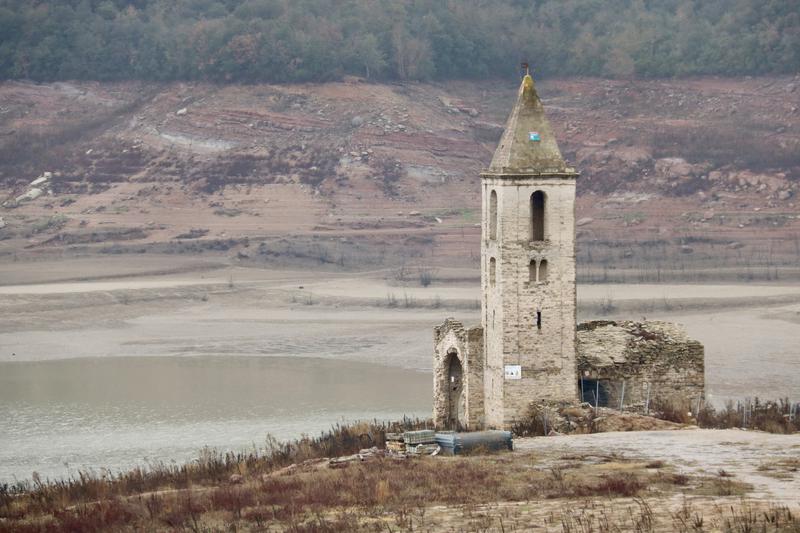Drought emergency could be lifted as reservoirs exceed 16% capacity
Recent rains bring relief to Ter-Llobregat system, which supplies water to 6 million people

The drought emergency in the Ter-Llobregat system, which supplies water to 6 million people, could be lifted if rainfall forecasts for the upcoming days are met, said David Mascort, Catalonia's minister for climate action.
On Monday, the reservoirs in the Ter-Llobregat system exceeded 16% of their capacity, the threshold for declaring a state of emergency. However, crossing this threshold does not automatically end the drought emergency.
According to Catalonia's drought plan, the government has a four-month window to lift the state of emergency and its restrictions.
"If the stored volume does not significantly exceed the 16% threshold, we will not lift the emergency. But if the forecasts for this and next week are met, we can do it," Mascort told El Periódico newspaper.
Not only must there be significant rainfall above the 16% reservoir limit to lift the emergency, but there must also be a sustained rainfall forecast for the future.
"If the forecasts say it will continue to rain a lot, we could lift the emergency with the reservoirs at 17%. If, on the other hand, it turns out that there will be no more rain, that will not be possible," Mascort added.
However, government spokesperson Patrícia Plaja underlined the point that to get out of the emergency phase, the entire context must be studied, and warned that reaching any particular reservoir volume percentage may not necessarily be the decision-maker to lift the emergency phase restrictions.
Plaja insisted that "it doesn't make sense" to lift the emergency only to end up returning to it some days later.
For now, she said there are no plans to relax the drought measures, and argued that it is not the same to have reserves at 16.5% at the beginning of a summer, with little rain forecast, as in September, usually a wet season.
The Government has also approved a decree-law of credit and financial measures to alleviate the effects of the drought. Plaja explained on Tuesday that the aid package will be worth €145 million, including €30 million to finance projects to increase the amount of in the network in inland Catalonia.
In addition, €27.5 million will go to expanding the Besòs Drinking Water Treatment Station, €18.6 million to create deep wells and improve the network, €50.5 million to help the primary sector; and €9 million more for forest fire prevention interventions.
Although the government allocated €1 billion for drought relief in the 2024 budget, the budget was not approved, leading to a snap election and the government is now looking for alternative ways to approve more funds for drought relief.
Drought emergency: What are the restrictions?
The Catalan government officially declared a drought emergency in February in the Ter-Llobregat system, which supplies water to 6 million people.
The new restrictions were implemented in 202 municipalities, including Barcelona and its metropolitan area, where most people live.
The red alert means increased water restrictions in various sectors, including agriculture, industry, urban and recreational activities.
The first step toward reducing water consumption is to lower the maximum amount of water allowed per person per day to 200 liters, 10 liters less than before.
Another key measure involves significant restrictions on agriculture, with an 80% reduction in irrigation. In addition, water use for livestock will be cut in half. Water use for industrial and urban purposes will also be reduced by 25%.
Water use for recreational activities will be prohibited, with some exceptions. Irrigation of public or private gardens will be allowed only if groundwater or recycled water is used to ensure that urban trees remain in good condition for pedestrian safety.
Similarly, sports facilities can irrigate their fields with recycled water, but must take compensatory measures such as closing showers.
Indoor and public pools, as well as outdoor pools used year-round for sport clubs, may be partially replenished if the water used is offset by water conservation measures.